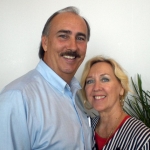Father Theodore Hesburgh, former president of Notre Dame University said, “Vision is the essence of leadership.”
Visionary leadership is knowing where you want to go, how to get there, and the three things required to make it happen: First, having a clear and compelling vision. Second, articulating and modeling it well. Third, getting your team focused and excited about pursuing it.
Above all, you must be confident and consistent, no one follows an uncertain or faint trumpet. Great leaders develop a clear and compelling vision by using one of the following three approaches. You can impose it, buy it, or forge it through persuasive consensus.
One, imposing a vision can be either by demand or persuasion. Teledyne founder, Henry Singleton, believes an organization is built around a mind with an idea that is aware of the key issues of his generation.
Great leaders stay ahead of the curve and lead from the future, not to the future. They are seasoned visionaries, sharpened by their image of the future. Their ability to empower and connect their teams’ everyday efforts to the vision is without question. They guide their organization with confidence and humility, not as overbearing power brokers.
Poor leaders impose their vision through demands often disguised as motivation, but in reality is manipulation. Great leaders’ caste their vision until it becomes the common vision of the team through communication that is vivid and compelling.
Second, you can buy a vision. Consultants will happily create a fashionable mission statement that creates a lot of energy, but few sustainable results. The problem with these “off-the-rack” solutions is they are so generic that they are usually worthless.
Visions can’t be bought like a McDonald’s burger or Starbucks latte. They can’t be a Burger King vision where everyone has it their way. Your team and stakeholders know immediately that you’re trying to sell them a second-hand, cut-and-paste dream that they reject immediately. If they don’t they are naive and of no real value, you need to release them.
Third, forging a vision. This happens through leadership consensus by encouraging broad contributions in putting flesh on the skeleton you provide. This produces a vision that’s the most enduring and effective for long term sustainable results.
At the end of the process you want a vision that is not only compelling, but energizes great buy-in by the core leaders and all the stakeholders. You don’t forge a vision overnight, but through patience, perseverance, and passion.
If you can’t get your team’s energized buy-in to the vision, ask yourself the following questions. How passionate am I about it? How often do I show it to them, not just in locker room pep talks, but through my daily actions? How much did I ask the team to contribute in the process

Dr. Larry Bennett writes from the perspective of an experienced warrior on the front lines, not one of an armchair observer. He has a strong apostolic/prophetic anointing and Dr. Bennett has served in many facets of ministry giving him the experience to share his knowledge to other leader’s. He has a strong anointing for marketplace ministry and wants to see the church rise to the new movement of releasing church members into the marketplace.
If you wish to contact Dr. Bennett you may do so through his email which is ch.larrybennett57@gmail.com, or call him at 863-206-2567.
Carlotta Bennett grew up in a Christian home, met her husband, Larry, in a Christian college and became a partner in various aspects of ministry. She is also a mother and a grandmother. Along with the supportive role to her husband’s ministry she has had experience in various leadership roles – Bible teacher, conference speaker, music and writing. She has ministered in numerous states, Europe, South America, Australia and the Caribbean Islands. Her ministry theme is The Courageous Living Series. Her primary focus at this point in time is writing.
Carlotta Bennett/Courageous Living
863-307-7128





Leave a Reply
Want to join the discussion?Feel free to contribute!